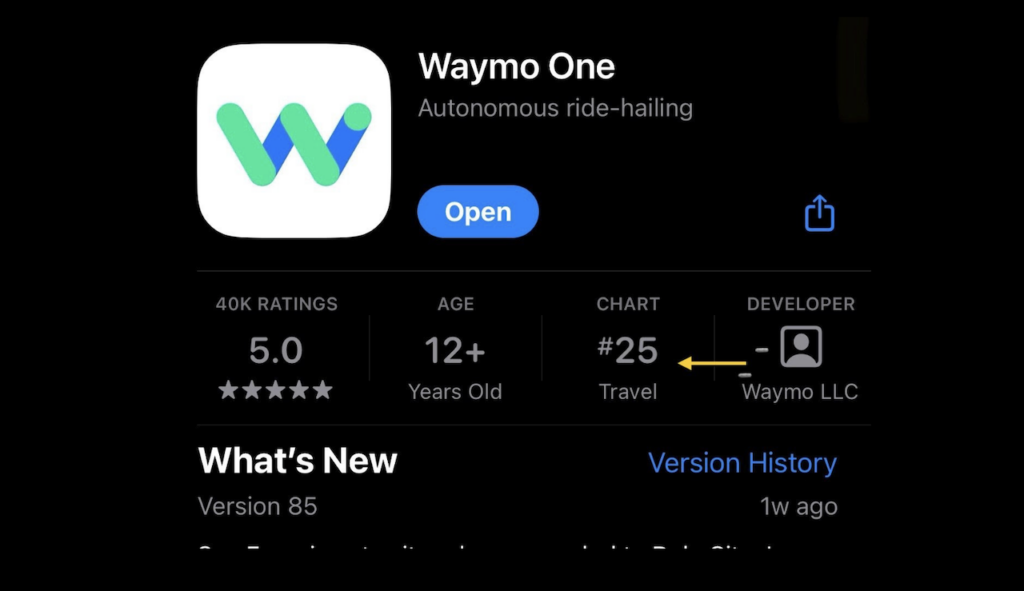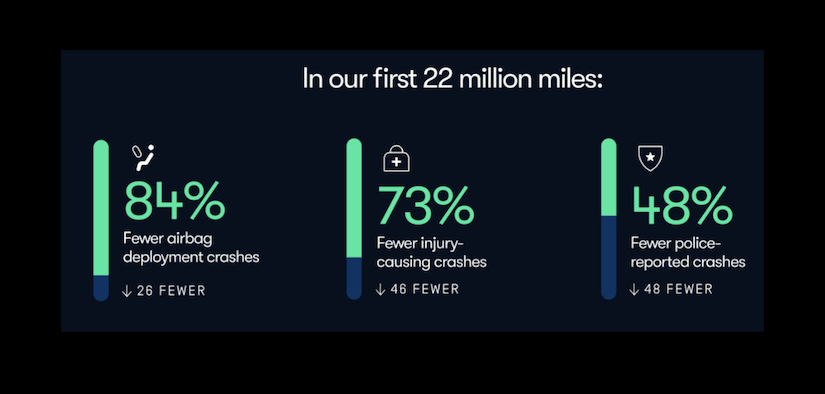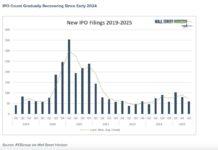Today, we’re focusing on robotaxis and the latest developments at Waymo with self-driving taxis.
Self-driving taxis are now a reality. l have personally ridden in one, and the data shows rapid growth is underway.
What the data says:
- Waymo is already a top 25 travel app, despite only being in 3-4 major cities.
- Data shows Waymo is a safer experience with 73% less injury induced crashes.
- 24/7 led by changes in battery tech; Tesla has a patent for charging pads.
#1 Waymo Already A Top 25 Travel App

The future of ridesharing is likely to be fully autonomous ride-hailing, and that future is already here. Waymo currently leads the space, with millions of miles driven without driver assistance. Having personally used Waymo, we can attest to the near-perfect experience. Waymo One operates in Metro Phoenix, the San Francisco Bay Area, Los Angeles, and is expanding in Austin, Texas. We believe this first-mover advantage is crucial, as cities are likely to limit the number of operators allowed in a given area.
#2 Data Says Lower Risks

Vehicle-related deaths and injuries remain significant, with 1.35 million fatalities worldwide each year and 36,096 road deaths in the U.S. in 2019. In the U.S., 94% of crashes involve human error. Data collected by Waymo suggests that fully autonomous vehicles could help reduce these numbers, showing 84% fewer airbag deployment crashes, 73% fewer injury-causing crashes, and 48% fewer police-reported crashes.
#3 Teslas Charging Pad Patent Shows Future of Charging Tech
While Waymo currently leads in autonomous driving, Tesla is also working to become a key player in the space. Tesla’s technology can already provide autonomous rides, but there is still a significant journey ahead before they gain approval to operate in cities, a milestone Waymo has already achieved. The image above shows Tesla’s patent for charging pads, which will likely be one of many solutions enabling 24/7 charging for fully autonomous electric fleets to function at scale.
Twitter: @_SeanDavid
The author and/or his firm have positions in the mentioned companies and underlying securities at the time of publication. Any opinions expressed herein are solely those of the author, and do not in any way represent the views or opinions of any other person or entity.








